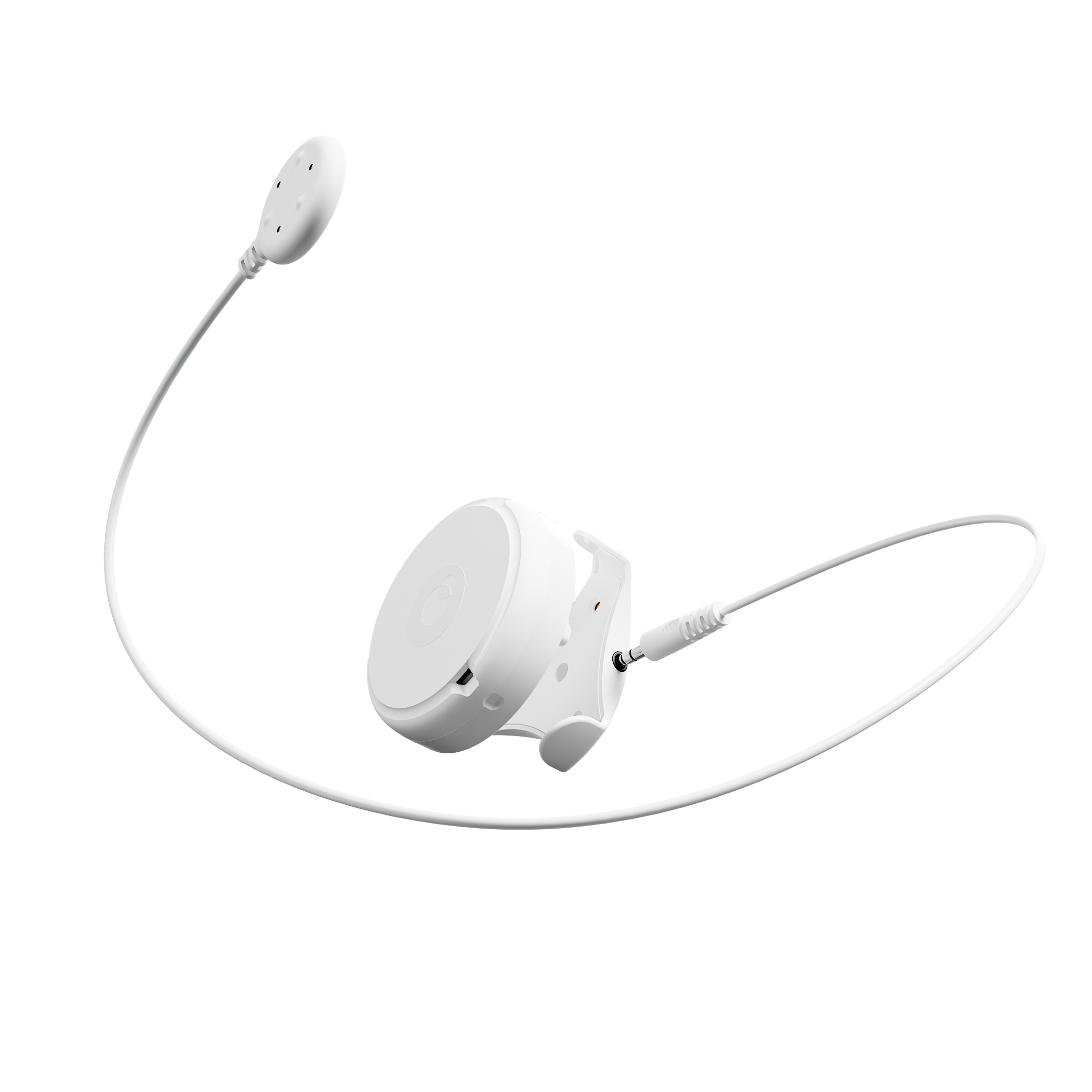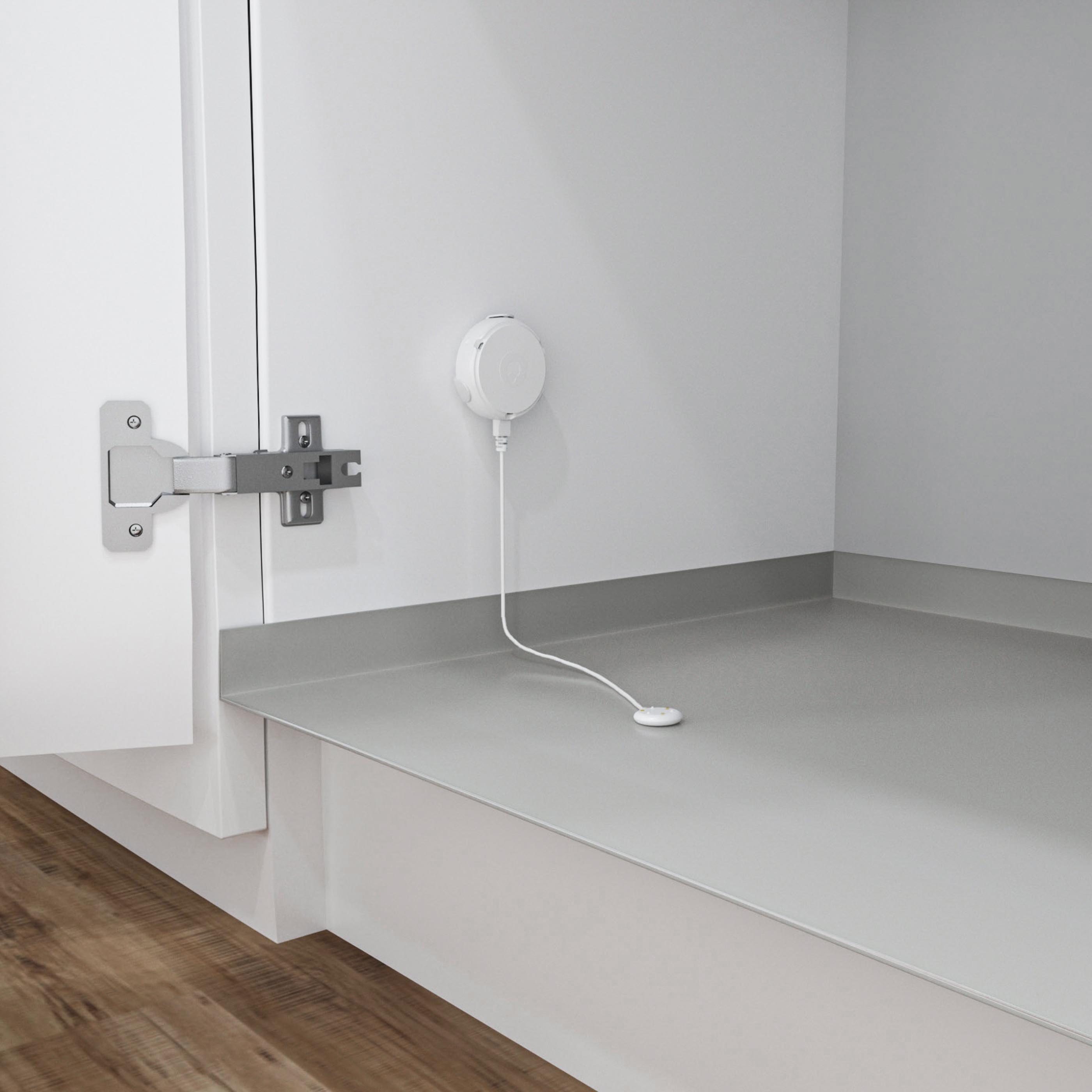How does the CubicDetector work?
The CubicDetector measures if any water comes in contact with the device's three golden water pins:
The optional extension leak sensor cable will also react in the same way if attached to the CubicDetector.
The device measures room temperature, humidity, and detects water contact with its three golden water pins. Data is sent to the cloud for long-term analysis. The device uses WiFi to send and receive data from the cloud.
Types of alarms
Mold risk:
The cloud will use the saved humidity data to indicate if there is a risk of mold near the device.
The relative humidity indoors should be between 20-60%.
Water leakage:
If any of the water sensor pins are in contact with water, the device will trigger an alarm
The device will beep, blink red and send a cloud notification.
Frostbite:
If the room temperature goes under 2°C, the device will alarm you about eventual frostbite via the cloud.
Temperature and humidity limits
Temperature range: -25°C … 60°C
- Temperature accuracy: ±1.5°C
- Humidity range: 0 - 100 % RH (Relative Humidity)
- Humidity accuracy: ± 5 %
Size and dimensions
Width: 67 mm
Height: 67 mm
Length: 25 mm
Length of sensor cable: 1219 x 27 x 8 mm
Battery information
The battery life is up to 2-3 years depending on the usage and alarm frequency.
The replaceable battery is a CR123A lithium cell.
Transmitting data
The device sends a record of its data every 30 minutes and publishes in the cloud every 24 hours.
WiFi networks
The CubicDetector uses 2.4 GHz WiFi (802.11b/g/n).
Certifications
The CubicDetector is compliant with the following certifications/standards:
CE Certification
RED Directive
- Radio/EMC:
- ETSI EN 300 489-1
- ETSI EN 300 489-17
- ETSI EN 300 328
- Health EMF:
- EN IEC 62311
- Safety:
- EN 62368-1
- RoHs Directive:
- EN 50581
- EAC Certificate
Recommended placement for a CubicDetector
The device should ideally be placed on strategic locations where water damages often occur, e.g. near toilets, freezer, washing machine, air conditioners etc.
Common installation areas are near or under:
- Washing machine
- Dishwasher
- Toilet
- Bath
- Kitchen sinks
- Under or near water appliances
- Water heater or heating boiler
- Water tanks
- Water pumps
- Basements
- Air conditioners
- Refrigerator or freezers
💡If you are using the detector with the accessory attached, place the end of the accessory where water could pool and the detector in a location where it can gather humidity and freezing readings in the area.



